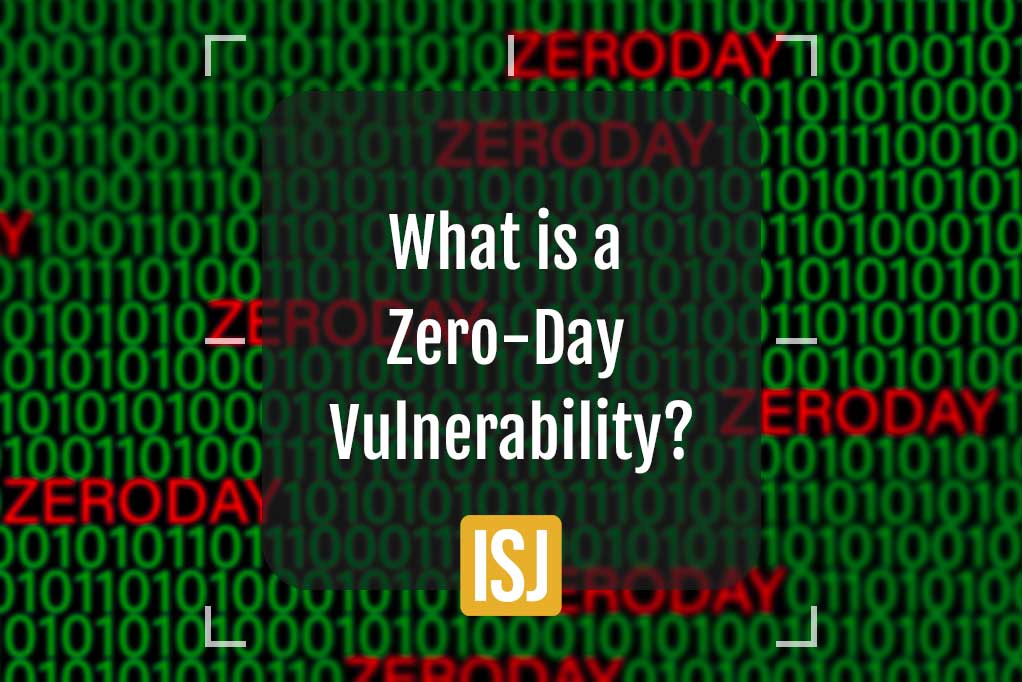What is a Zero Day Vulnerability?


Simon Burge
Share this content
In cybersecurity, the phrase “zero day vulnerability” stands as a formidable and enigmatic presence.
For both tech enthusiasts and the general public, the mere mention of a zero day vulnerability evokes a sense of urgency and raises questions about potential risks.
This article endeavours to simplify this complex concept, peeling back the layers of ambiguity that surround zero day vulnerabilities.
Aiming to shed light on what exactly these vulnerabilities entail, who becomes susceptible to their exploits, and, most crucially, how individuals and organisations can fortify their defences against these clandestine digital threats.
In an age where technology intertwines with every facet of our lives, understanding the intricacies of zero day vulnerabilities is paramount.
This article goes beyond the jargon, breaking down the nuances of these vulnerabilities to empower readers with knowledge.
From the mechanics of zero day vulnerabilities to practical strategies for defence, and how vulnerabilities differ from exploits and attacks.
Article Chapters
Toggle- What Does Zero Day Mean?
- What is Vulnerability?
- What is a Zero Day Vulnerability?
- Who are the Targets for a Zero Day Vulnerability?
- How Can You Stop a Zero Day Vulnerability?
- How is a Zero Day Vulnerability Different From a Zero Day Exploit?
- How is a Zero Day Vulnerability Different From a Zero Day Attack?
- Examples of Zero Day Vulnerability and Attacks
- Conclusion
What Does Zero Day Mean?

Zero day, in the world of computing, refers to the moment a software vulnerability is discovered.
The term “zero day” implies that developers have had zero days to address or patch the identified vulnerability.
What is Vulnerability?

Comprehending the fundamental concept of “vulnerability” lays the groundwork for understanding the gravity of zero day vulnerabilities.
In digital security, a vulnerability signifies a potential weakness or flaw within the design, implementation, or configuration of a system.
These vulnerabilities become points of exploitation for cyber adversaries seeking unauthorised access or malicious compromise.
These weaknesses can manifest at various levels, whether in the architecture of software, the configuration of networks, or even the intricacies of hardware design.
Cybersecurity professionals diligently strive to identify and patch these vulnerabilities, aiming to fortify the digital defences against potential threats.
Recognising vulnerabilities as potential entry points for cyber threats underscores the constant need for proactive security measures, reinforcing the ongoing battle to safeguard digital landscapes.
What is a Zero Day Vulnerability?

A zero day vulnerability refers to a flaw or weakness in software or hardware that remains unknown to the vendor or the public.
In practical terms, when a zero day vulnerability is discovered, it means that cybercriminals have identified a vulnerability that the software or hardware vendor is unaware of.
This knowledge asymmetry creates a precarious window of opportunity for malicious criminals who can exploit the undisclosed vulnerability before developers can craft and deploy an effective patch.
The consequences of a zero day vulnerability being exploited can be severe.
Cyber attackers can use it to gain unauthorised access, execute malicious code, or compromise sensitive data.
These vulnerabilities are often traded in underground forums, highlighting the lucrative nature of their exploitation.
Zero day vulnerabilities underscore the relentless pace at which the cybersecurity landscape evolves.
In a digital environment where threats can emerge unexpectedly, understanding and addressing zero day vulnerabilities become paramount to ensuring the resilience and security of software, hardware, and, by extension, the sensitive data and systems they safeguard.
This constant battle between discovery and defence defines the ongoing narrative of cybersecurity, where staying one step ahead is not just a goal but an imperative.
Who are the Targets for a Zero Day Vulnerability?

Zero day vulnerabilities, with their potential for covert exploitation, do not discriminate – they pose a threat to a broad spectrum of targets.
Malicious criminals seeking to capitalise on these undisclosed vulnerabilities are motivated by various factors, including financial gain, political espionage, or simply the thrill of causing disruption.
Some of the most common targets for zero day vulnerabilities are:
Individual Users
Everyday users are not immune to the risks associated with zero day vulnerabilities.
Attacks can manifest through compromised websites, malicious emails, or even seemingly innocuous software.
Businesses and Corporations
For businesses, especially those handling sensitive data, zero day vulnerabilities pose a significant risk.
Cybercriminals may seek to exploit these vulnerabilities to gain unauthorised access to proprietary information, compromise financial systems, or disrupt operations.
Government Entities
Governments, with their vast digital infrastructure and troves of sensitive information, are prime targets.
Nation-states or cyber espionage groups may leverage zero day vulnerabilities to gain intelligence, manipulate political landscapes, or disrupt critical services.
Critical Infrastructure
Systems that control critical infrastructure, such as energy grids, transportation networks, and healthcare facilities, are high-priority targets.
Exploiting vulnerabilities in these systems could lead to widespread disruption and pose a threat to public safety.
How Can You Stop a Zero Day Vulnerability?

The elusive nature of zero day vulnerabilities makes prevention challenging, but there are proactive measures individuals and organisations can take to minimise the risks and potential damages.
Regular Software Updates
Timely software updates are a primary line of defence against zero day vulnerabilities.
Developers often release patches to address known vulnerabilities, so keeping your software, operating systems, and applications up to date is crucial.
Employ Security Tools
Use robust security tools, including antivirus software, intrusion detection systems, and firewalls.
These tools can help detect and block suspicious activities, providing an additional layer of protection.
Adopt a Security-Conscious Culture
Educate and instil a security-conscious culture among users.
Encourage the practice of safe computing habits, such as avoiding suspicious links and emails, using strong and unique passwords, and being vigilant against phishing attempts.
Implement Network Segmentation
Network segmentation can limit the potential impact of a zero day vulnerability by isolating affected areas.
If one part of the network is compromised, segmentation helps prevent the lateral movement of attackers.
Collaborate with Security Communities
Engage with security communities, both within and outside your organisation.
Sharing threat intelligence and collaborating with others in the cybersecurity ecosystem enhances collective defence capabilities.
How is a Zero Day Vulnerability Different From a Zero Day Exploit?

In cybersecurity, distinguishing between a zero day vulnerability and a zero day exploit is essential for comprehending the nuances of digital threats.
A zero day vulnerability signifies an undisclosed flaw in software or hardware, highlighting the moment of discovery when developers and the public have had zero days to address or patch this security gap.
It underscores the latent weakness that cyber adversaries seek to exploit.
On the other hand, a zero day exploit represents the active manifestation of an attack that capitalises on the discovered vulnerability.
Once cybercriminals identify a zero day vulnerability, they craft an exploit- malicious code or a specific technique – that targets this security gap.
The exploit is the weaponized payload designed to take advantage of the vulnerability, enabling unauthorised access, code execution, or system compromise.
In essence, while a zero day vulnerability is the silent, unnoticed weakness, a zero day exploit is the dynamic, offensive tool that leverages this vulnerability for malicious purposes.
This distinction highlights the rapid pace of the cybersecurity landscape and underscores the imperative for swift, proactive measures to mitigate the risks associated with both vulnerabilities and their potential exploits.
How is a Zero Day Vulnerability Different From a Zero Day Attack?

Knowing the disparities between a zero day vulnerability and a zero day attack is crucial for understanding the stages of digital threats.
A zero day attack is a comprehensive offensive operation that exploits an identified vulnerability.
It involves the entire lifecycle of an attack, starting with the discovery of the weakness, progressing through the crafting of malicious code or techniques, and culminating in the execution of the attack.
Understanding this distinction emphasises the proactive and reactive dimensions of cybersecurity.
While a zero day vulnerability reveals a potential entry point for exploitation, a zero day attack signifies the active utilisation of this vulnerability by cyber criminals.
This awareness underscores the critical need for swift response mechanisms, including patching vulnerabilities and deploying robust defence strategies, to thwart potential attacks before they materialise.
Examples of Zero Day Vulnerability and Attacks

Aurora (2009)
The Aurora attacks, in 2009, targeted major technology companies, including Google and Adobe.
Exploiting a zero day vulnerability in Internet Explorer, the attackers infiltrated systems, emphasising the vulnerability of widely-used software.
This incident highlighted the potential consequences of zero day attacks on high-profile entities, prompting a reevaluation of cybersecurity strategies.
Heartbleed (2014)
Heartbleed, one of the most infamous zero day vulnerabilities, affected the OpenSSL cryptographic software library.
This critical flaw allowed attackers to access sensitive data, including user credentials and private keys, impacting a vast number of websites.
The Heartbleed incident underscored the widespread ramifications of zero day vulnerabilities, emphasising the need for swift and comprehensive responses.
Internet Explorer (2019)
In 2019, a zero day vulnerability in Microsoft’s Internet Explorer was exploited in targeted attacks.
Cybercriminals leveraged this flaw to conduct watering hole attacks, compromising specific websites to infect visitors.
This event underscored the ongoing challenges in securing widely-used software and the importance of proactive browser security measures.
RSA Security (2011)
The RSA Security breach involved a zero day attack targeting SecurID authentication tokens.
Exploiting a vulnerability in Adobe Flash, the attackers gained access to sensitive information, compromising the security of RSA’s SecurID tokens.
This incident illustrated the potential ripple effects when core security components are compromised, affecting broader cybersecurity ecosystems.
Sophos (2020)
In 2020, a zero day vulnerability in the Sophos XG Firewall was exploited by attackers.
This flaw allowed unauthorised access to the firewall’s management interface, enabling the deployment of ransomware on compromised systems.
The Sophos incident highlighted the persistent challenges in securing network infrastructure against evolving and sophisticated threats.
Conclusion
The ever-present zero day vulnerabilities underscores the perpetual arms race in the digital sphere.
As technology advances, so do the tactics of cyber adversaries seeking to exploit undiscovered flaws for their gain.
Constant vigilance and proactive security measures are not merely recommendations but imperatives in this dynamic landscape.
By demystifying the nature of these vulnerabilities, stakeholders can elevate their awareness, fostering a culture of cybersecurity consciousness.
The evolving landscape of cybersecurity demands not only reactive responses to identified vulnerabilities but a proactive mindset that anticipates potential threats.
Continuous education, collaboration within security communities, and the implementation of best practices become key pillars in building digital resilience.

